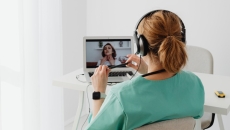Andrea Fox
HIPAA covered entities should be proactive, requiring notification of any security incident – not just breaches – in their business agreements, says Michelle Garvey Brennfleck, healthcare corporate and regulatory shareholder at Buchanan Ingersoll & Rooney PC.
In the future, a private 5G network could function like today's wired network connections, according to Shibu Thomas, the health system's chief technology officer.
The agencies contacted 130 health systems and telehealth providers by mail to emphasize the potential HIPAA risks of using Meta/Facebook pixel and Google Analytics tracking tools that may be "impermissibly disclosing" protected health information.
United States Core Data for Interoperability Standard, version 4, is a key resource for information blocking and interoperability compliance. It is adding 20 new data elements and one new data class – facility information – to the previous standard set.
After legal pushback from providers and a veto of the Oklahoma Health Care Authority requirements, the OHCA Board approved emergency rules to encourage collaboration with the new statewide health information exchange that launched July 1.
A new API that uses algorithms and proprietary machine learning to enhance energy usage data can alert caregivers about unusual habits that may require intervention.
The HIPAA-compliant video analytics platform will be layered on UMC’s existing security systems. When it identifies guns, trained experts verify the threat and can dispatch alerts and intelligence to the police.
Threat actors are using artificial intelligence for both designing and executing attacks on hospitals and health systems. HC3 used ChatGPT to show how bad actors leverage generative AI to design spear-phishing emails and malware.
Artificial intelligence has changed the threat landscape, enabling new cybersecurity risks for health systems: more sophisticated social engineering, automated vulnerability intelligence gathering, endpoint detection evasion and more.
University of Texas researchers found that symptoms of certain diseases are more difficult for patients to communicate and doctors to observe over video. Other limitations mean little cost-reduction benefit from telehealth when compared to in-person care.










